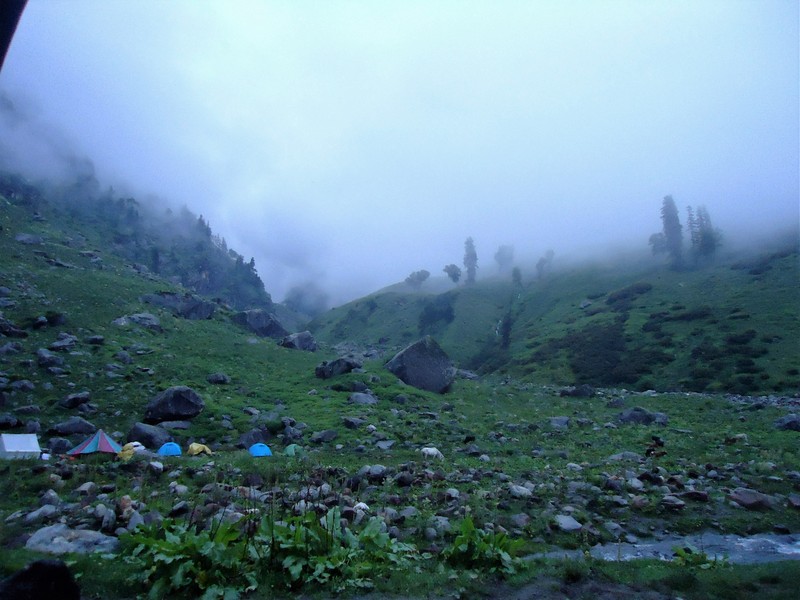 |
| As the Sun set, and daylight faded, the clouds descended into the valley and would soon envelop our camp! This was at the end of the first day of our trek across the Hampta Pass! |
 |
| I am joining Natasha for Wordless Wednesday! |
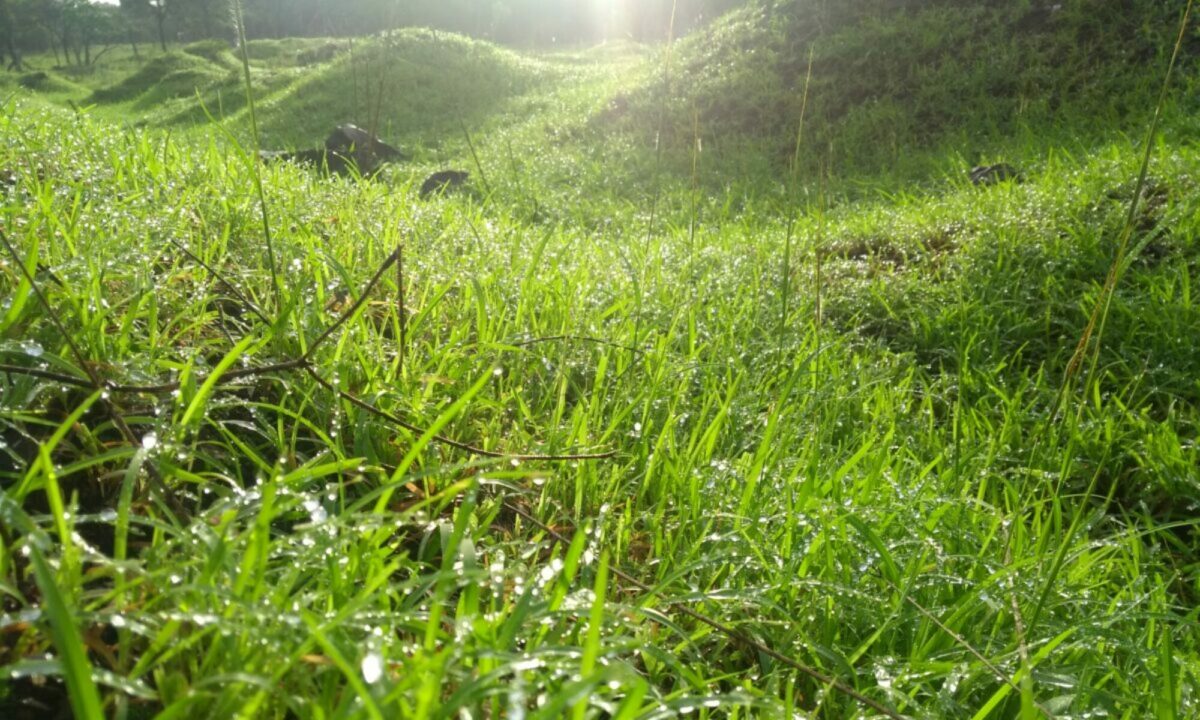
A khatta-meetha take on life around me through my presbiopic eyes!
 |
| As the Sun set, and daylight faded, the clouds descended into the valley and would soon envelop our camp! This was at the end of the first day of our trek across the Hampta Pass! |
 |
| I am joining Natasha for Wordless Wednesday! |
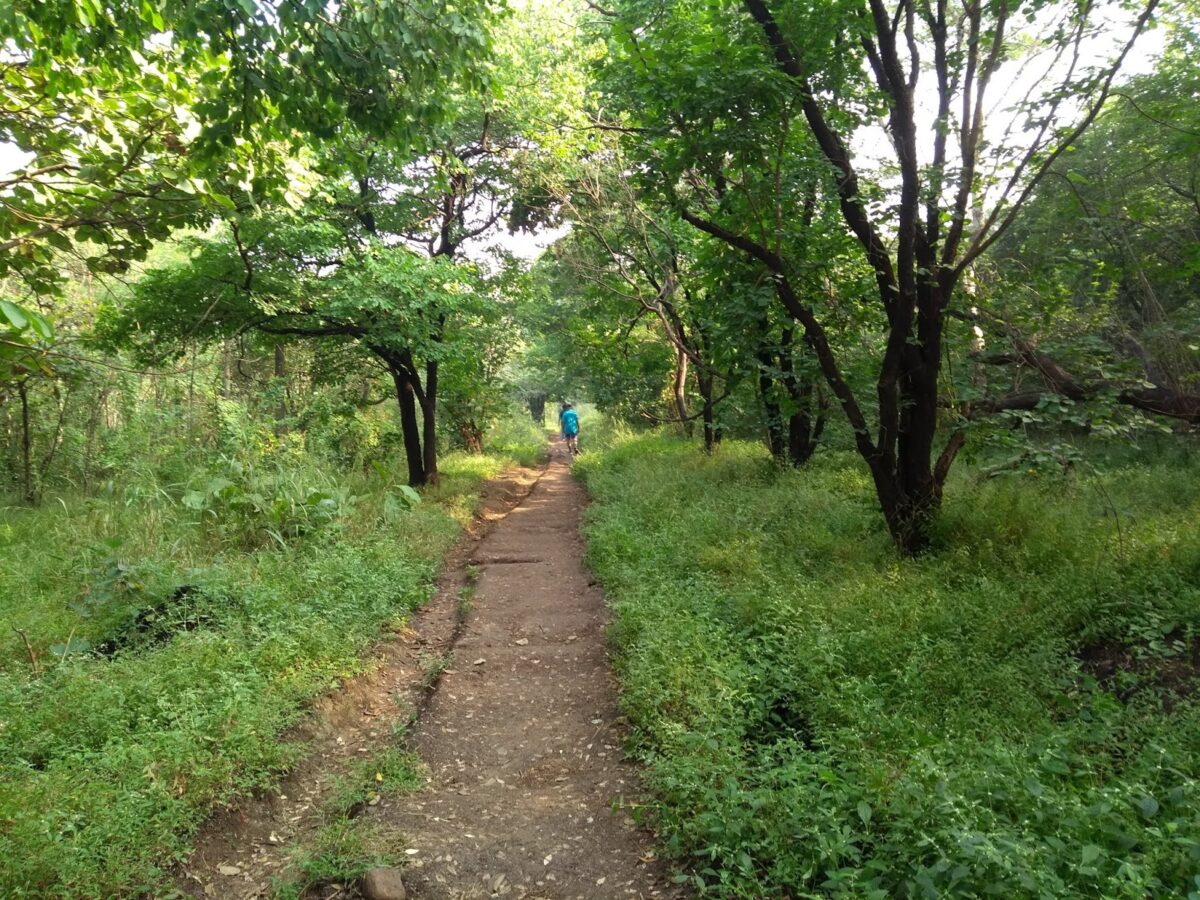 |
| Happily Surprised |
This is the Garari which goes by the botanical name of Cleistanthus collinus of the Euphorbiaceae family. Its dark green leaves and almost black fissured trunk are quite attractive but the leaves, bark and roots are said to be poisonous.
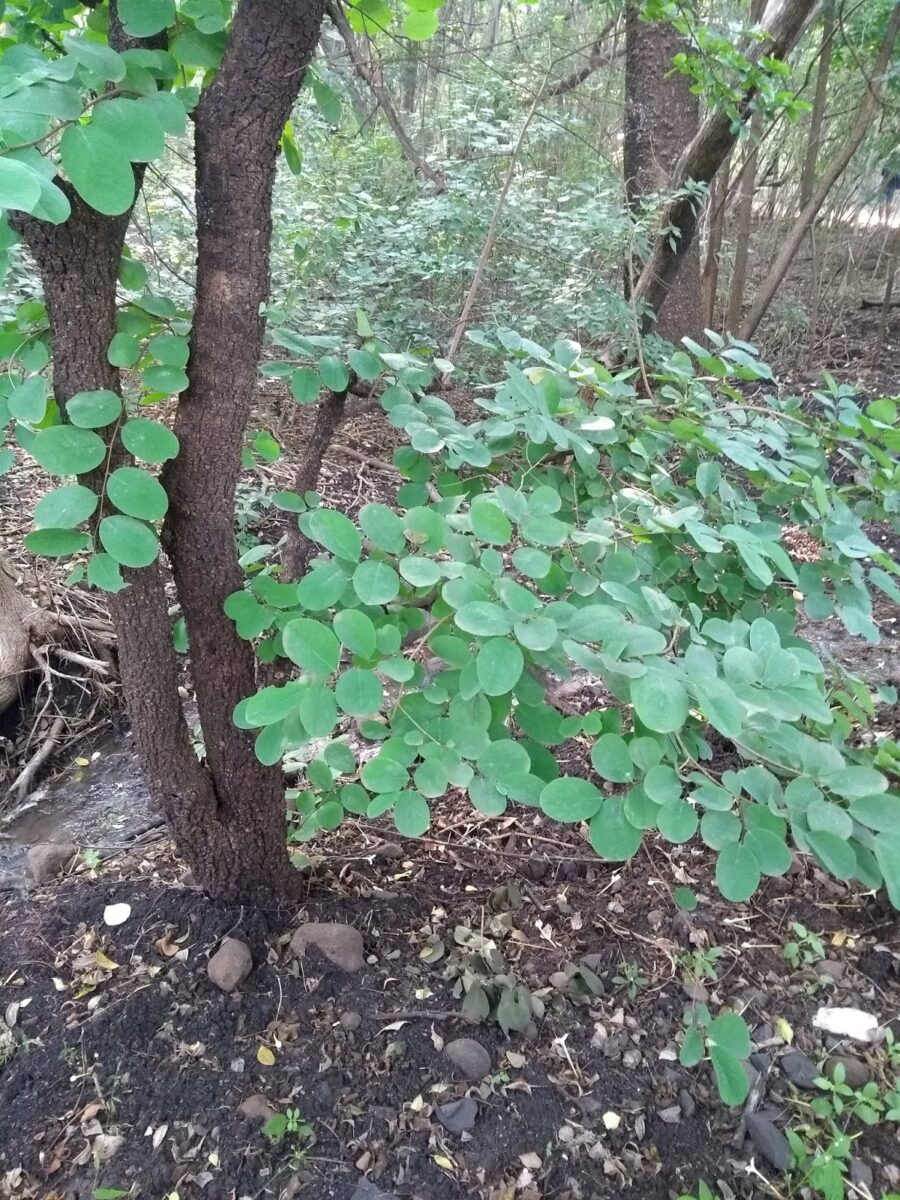
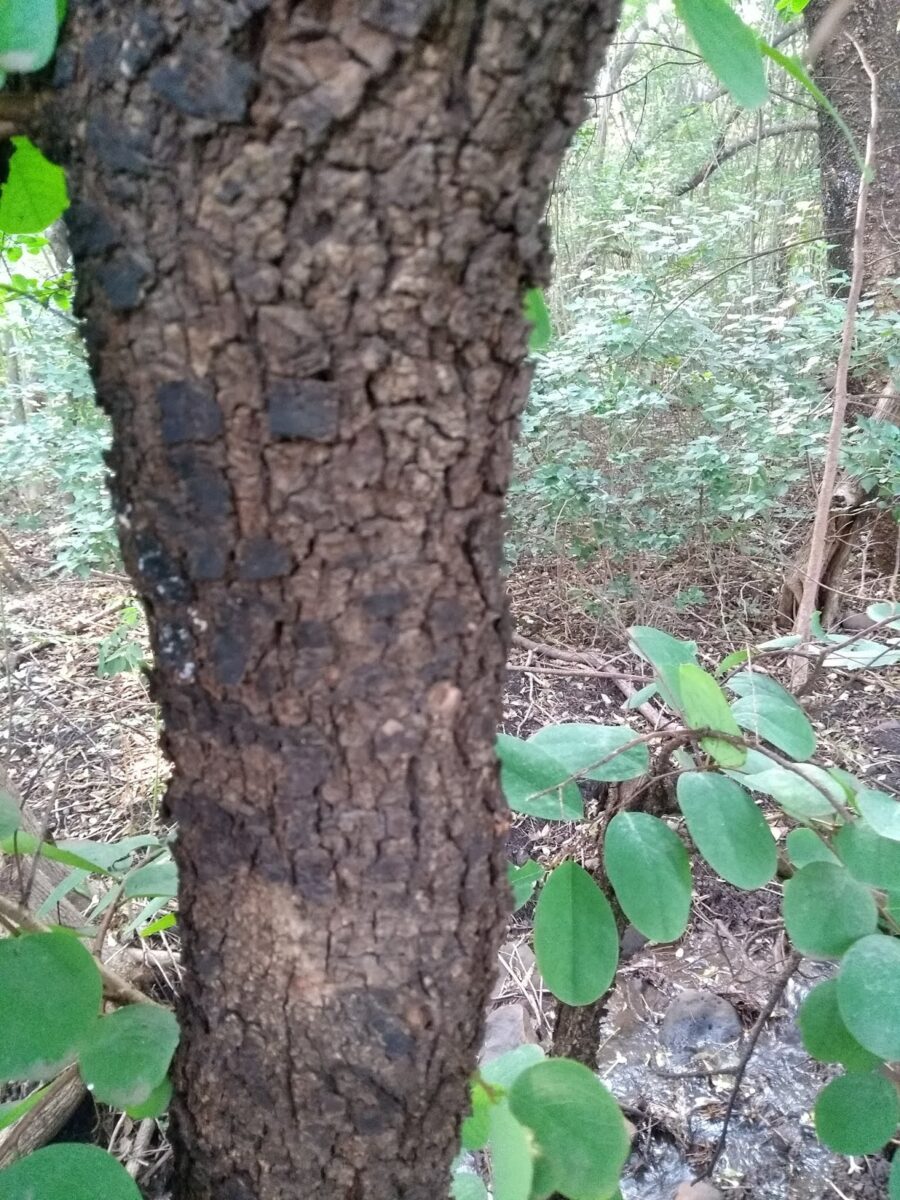
Obviously, the hills will continue to surprise … Never take things for granted!
Have you been surprised by trees in your neighbourhood?
I am joining Parul in her ThursdayTreeLove bloghop. Do head over to see some fantastic trees from around the world. Better still join in.
We are celebrating Diwali here in India so here’s wishing everyone..
Happy Prosperous Healthy Diwali! Lets see, learn from and appreciate what Mother Nature has to offer!

Welcome!
We are with the 2018 April AtoZ Blogging challenge and its my fifth attempt. For those who missed it, here is the link to my Theme Reveal post. Do the alphabets still stand for the same things we learnt about in Nursery school?
Its day twenty and the alphabet is T.
T is for Train is passe. Trains take you to the foothills of the Himalayas which are popular sites for Trekking… For me, trekking is a recent activity, one that I have enjoyed tremendously. Initially I ventured for day long excursions but thereafter I gathered courage to take up longer treks.
Since the alphabet is T let me take you on an e-trek to Tungnath.
Located in India’s Uttarakhand state, Tungnath is the seat of the highest Shiva temple at a height of about 12000 ft AMSL (3680m). It is one of the Panch Kedar. The beautiful temple is about 1000 years old and can be reached by properly laid out path that begins from Chopta. The route is about 3kms long and meanders climbing steadily towards the peak.
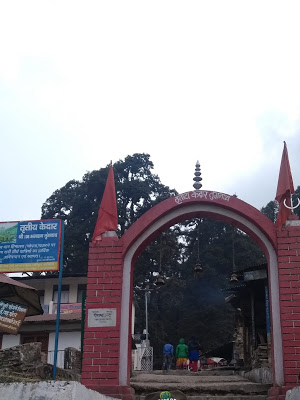 |
| Arch way to the path |
Initially, the path is through the a forest of Rhododendrons. According to our guide, the colour of the flowers changes with elevation. Trees at a lower height bear bright red flowers, those of trees at a higher level are pink and trees that grow even higher bear white flowers. (I shall talk about flowers at another time!)
The pathway is fully cemented and broad enough for people to walk in both directions. However, if you do meet mules (which is quite often) it is a wise move to step aside and let them pass. Enroute there are a couple of shacks selling tea, some snacks and bottled water if one does happen to finish the one they carry.
In the beginning, the surrounding mountains peep at you from behind or in between the trees but come into full view as we leave the tree line behind. We got a brief glimpse of the majestic snow clad peaks which took my breath away literally! The tall Rhododendrons make way way for shrubby trees which for some strange reason grow almost horizontally! As we moved higher, the tree line ends to make way for grassy slopes.
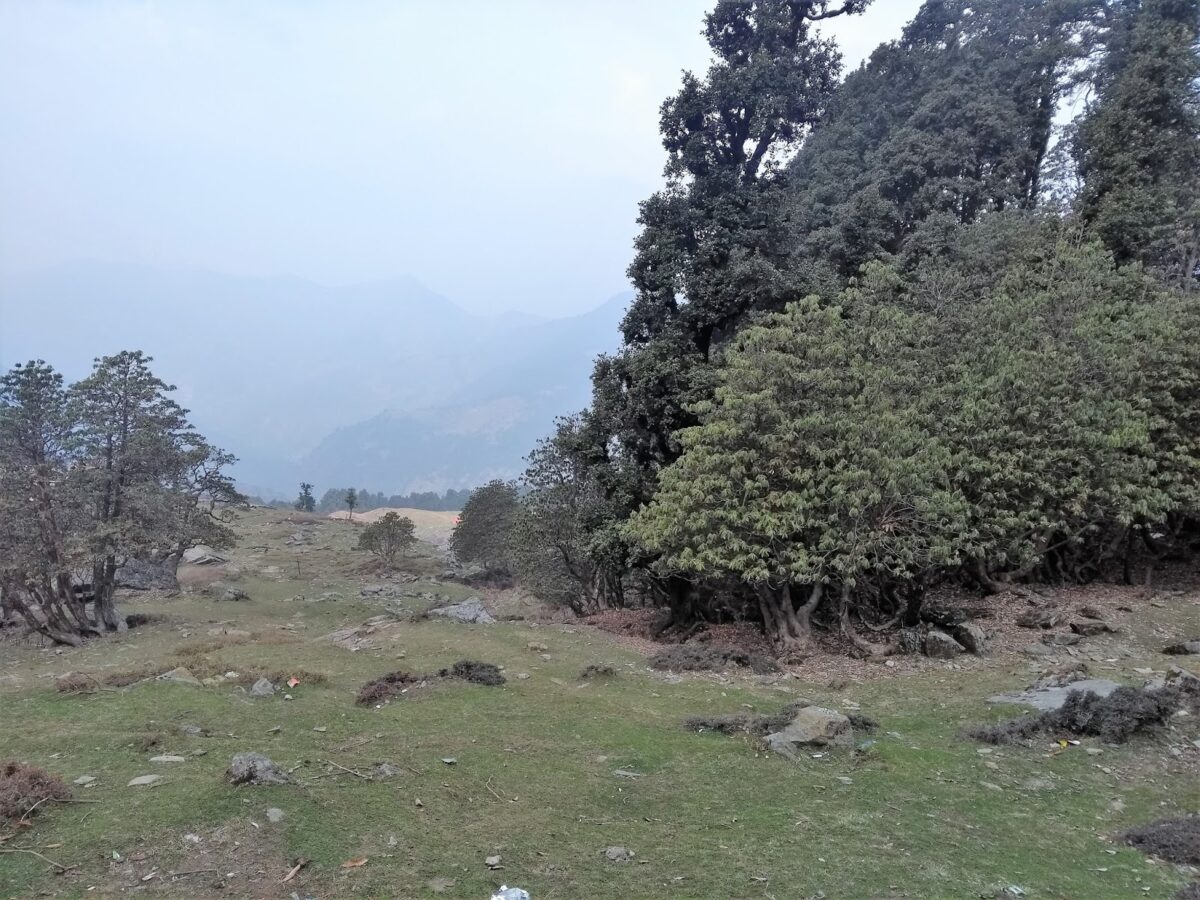 |
| We had a faint view of the mountains at the start of our walk |
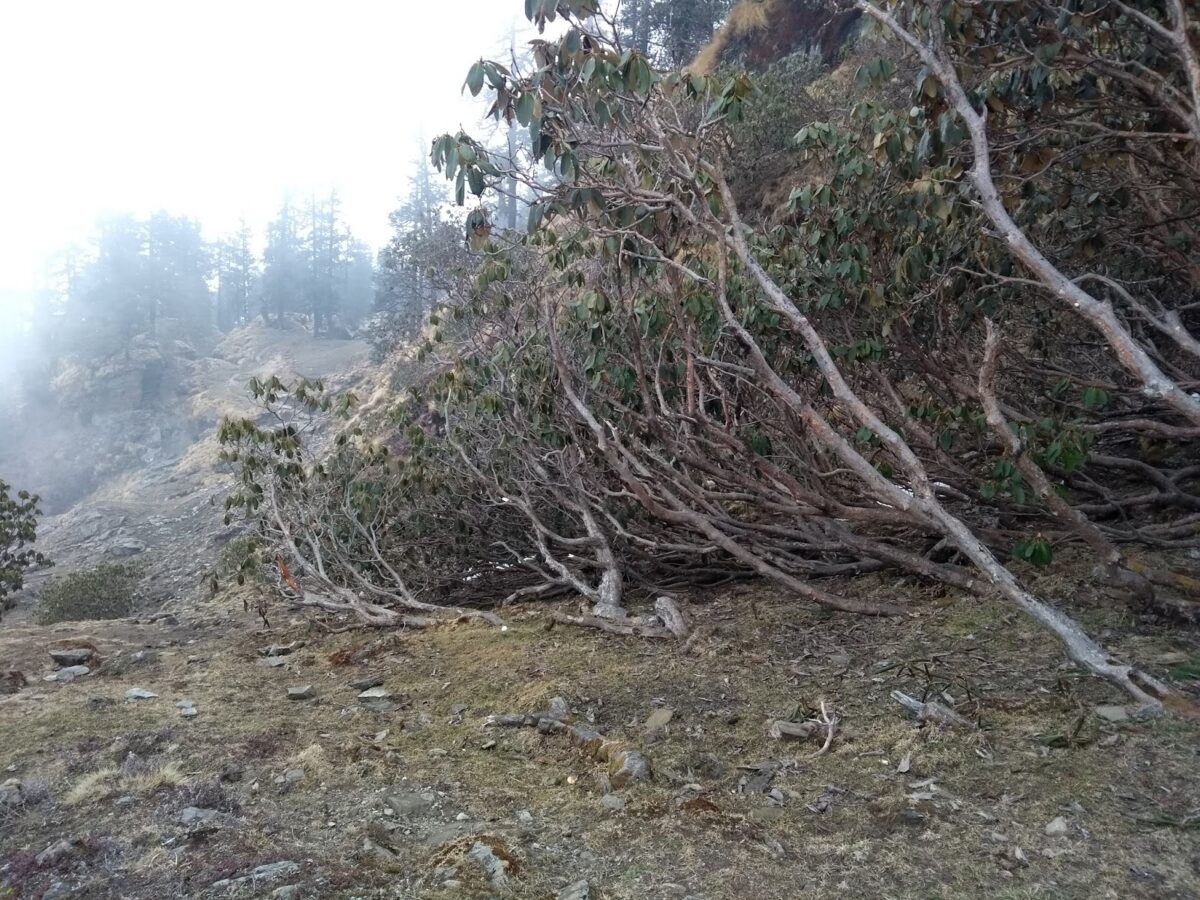 |
| Sleeping trees! |
This mountain too remains snow bound in winters when the route remains officially closed. The temple is shut in winters as well. The Primulas had just about started flowering and their purple heads nodded with the breeze! The Rhododendrons were always just out of reach whenever I tried to pluck one. I got lucky when a I spied an undamaged inflorescence waiting to be picked up!
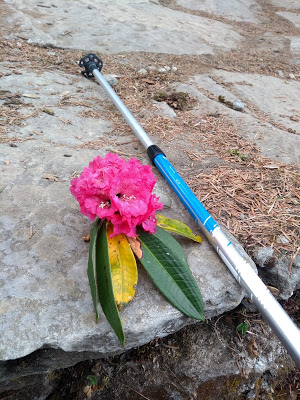 |
| Rhododendron! |
The changing flora helps take away the monotony of the climb and frequent photo stops also ensure I could catch my breath! Some of my co-trekkers were lucky enough to spot a Monal !
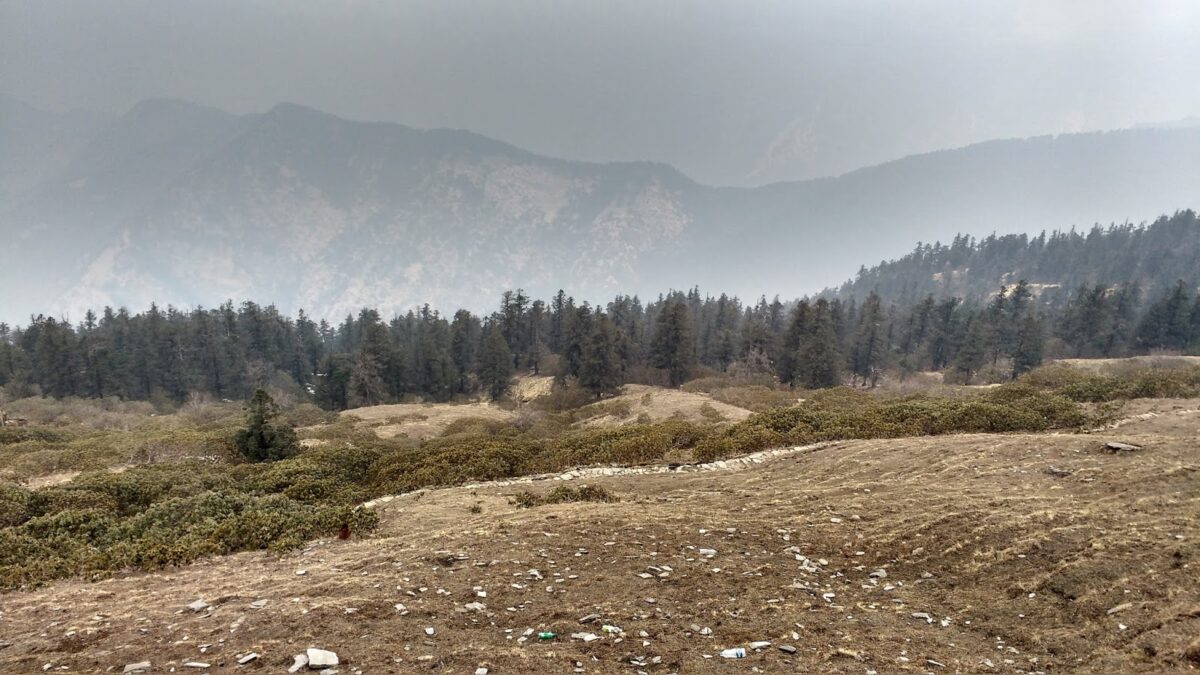 |
| Leaving the tree line… |
A sure sign to indicate end of the trail is the increasing number of tea shacks! Difficult as it was after the two hour non-stop climb, we ignored the inviting fragrance of masala chai and Maggi and forged ahead.. I find that the final few meters are always the most difficult but we did reach the temple in good time.
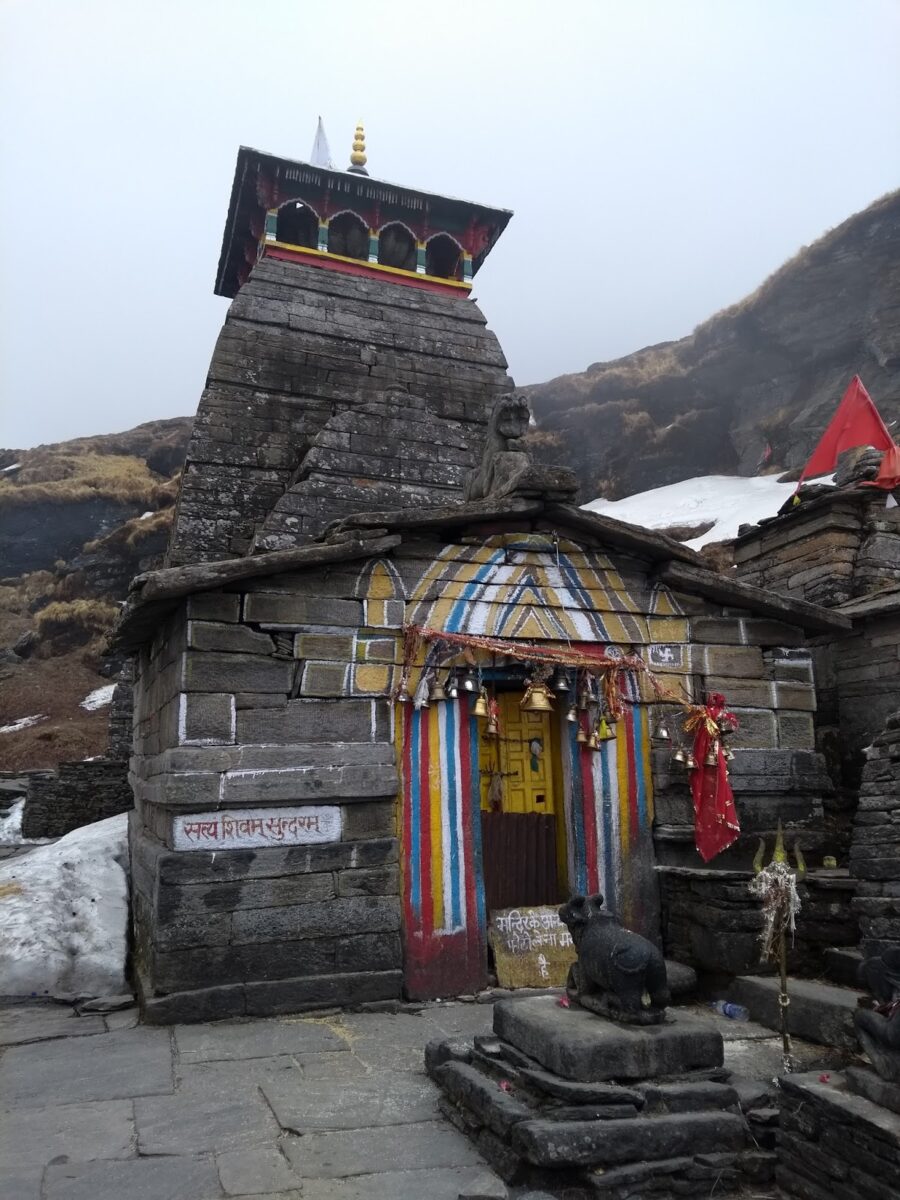 |
| The temple at Tungnath |
Weather is unpredictable in the Himalayas and sure enough it began the deteriorate. Clouds had moved in. Visibility reduced and Chandrashila was calling.
The temple was shut (our trek was at March end and the deity had been shifted to its winter seat) so we said a short thank you prayer from outside itself. We were carrying packed lunch so decided to proceed ahead. This is a tricky climb and we faced many slippery patches due to melting snow. Soon the path was engulfed by clouds and we could barely see up to 100m. The group was large and determined and the guides were motivating…
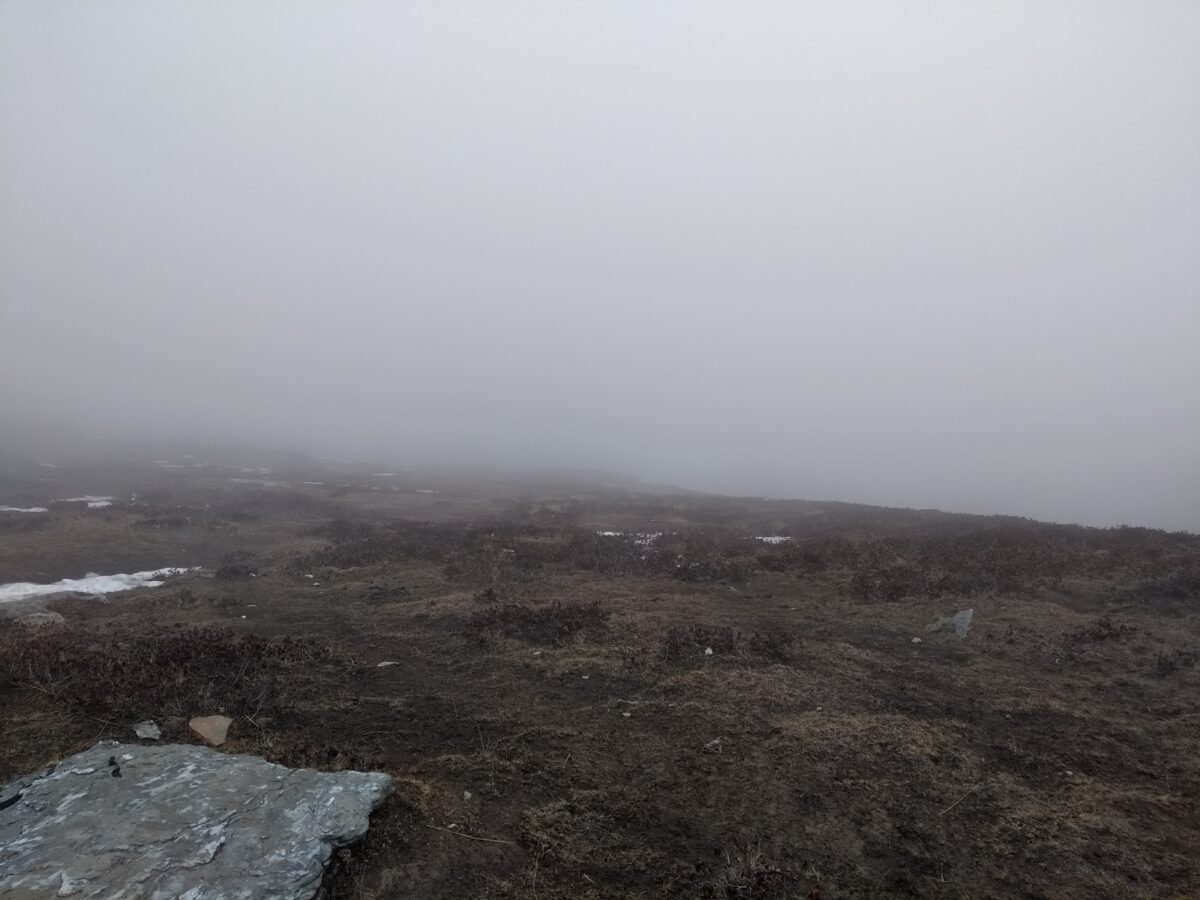 |
| The clouds moved in and visibility dropped rapidly |
We had zero hopes of the grand views that are the hall mark of Chandrashila but reaching there was our sole aim. One foot at a time, one behind the other, we made it to the top!
Yay!
Chandrashila is at an elevation of around 13000ft – a hotly debated figure I believe. The peak has a small temple which would have had the most beautiful backdrop on clear day. By now, a gentle drizzle had begun and the droplets turned to snow flakes … We all donned rain gear and turned back without much ado. The thick fog ensured I could not see the deep valley and hence there was no fear while climbing down.
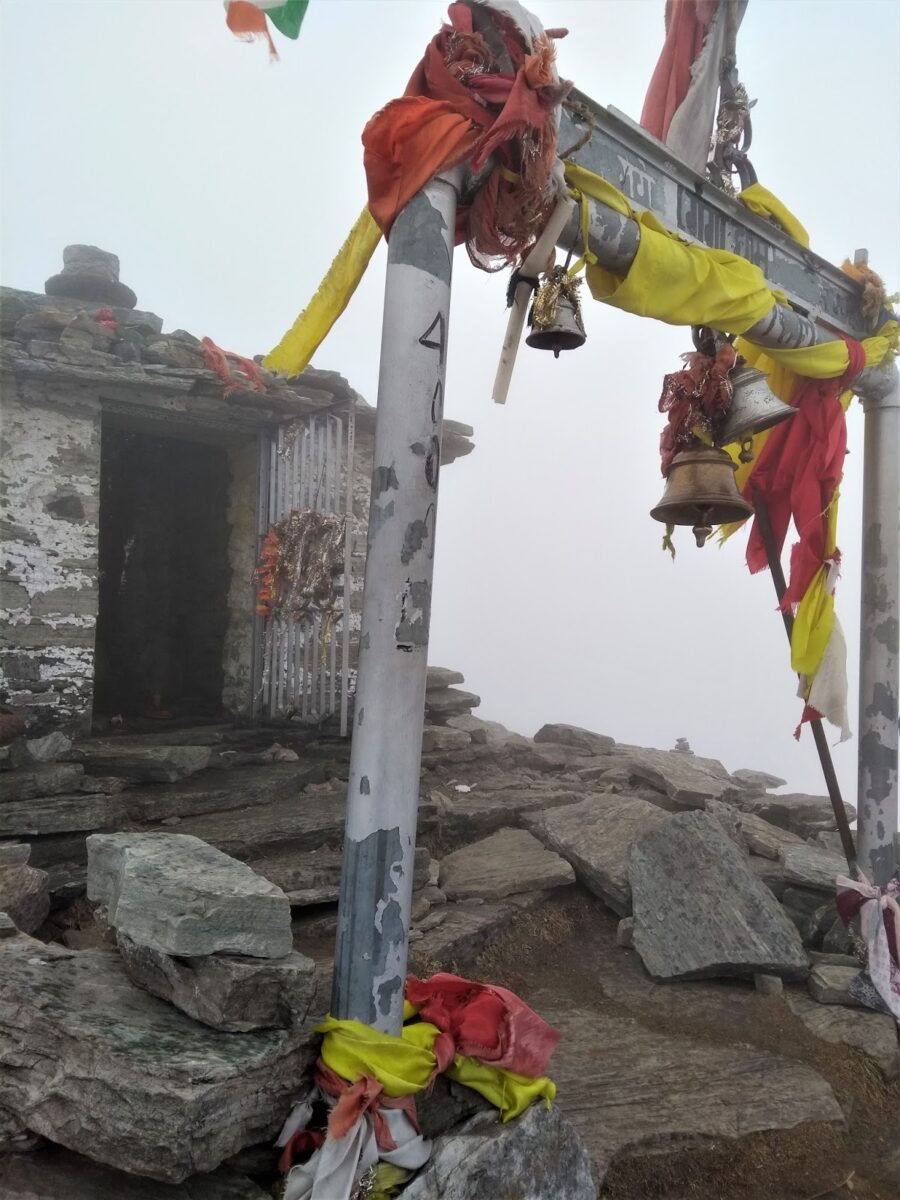 |
| Temple at Chandrashila peak |
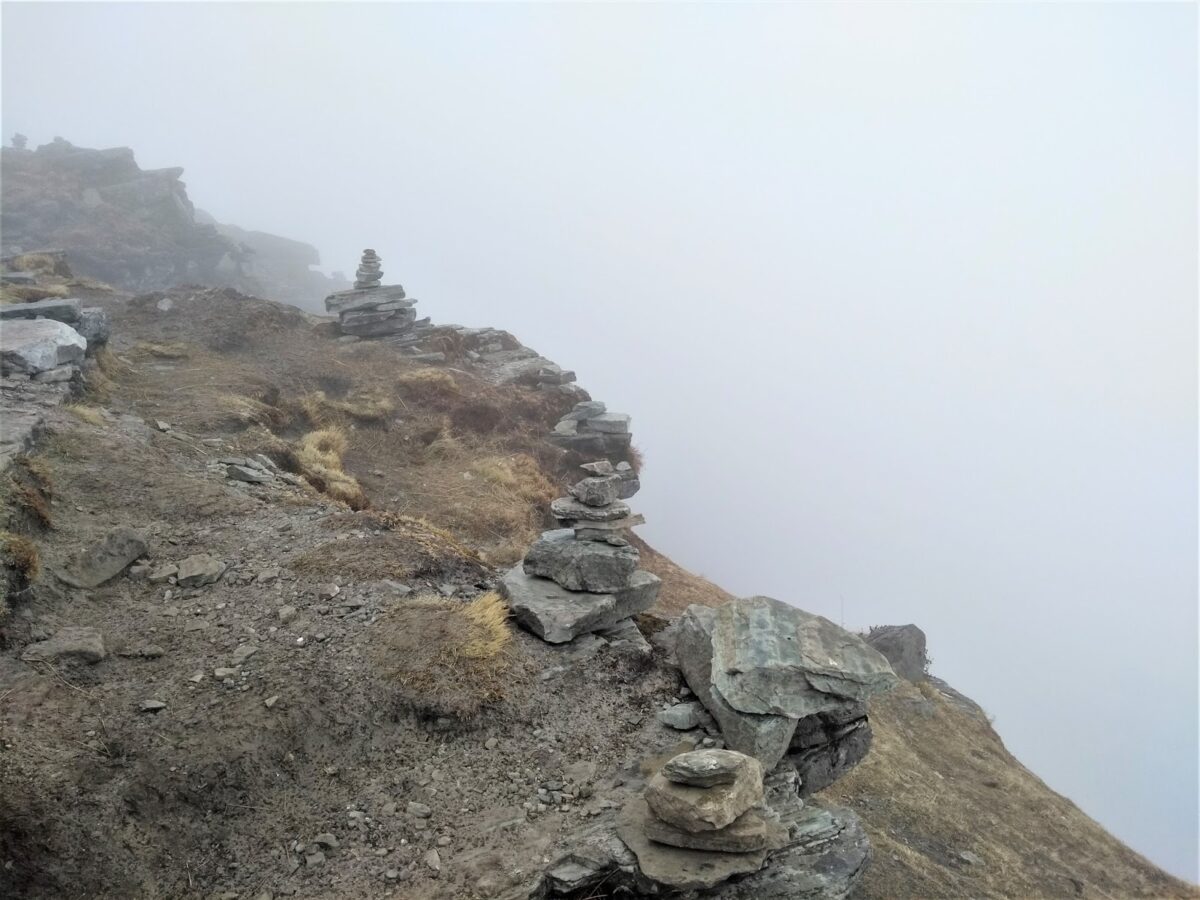 |
| No views |
We made a short halt near the temple at Tungnath for tea and lunch. The descent would have to be fast as the clouds looked menacing. We made good time but had to take refuge in a wayside shack when it began raining in earnest. Steaming hot tea restored our spirits and we returned to base wet, cold and very happy!
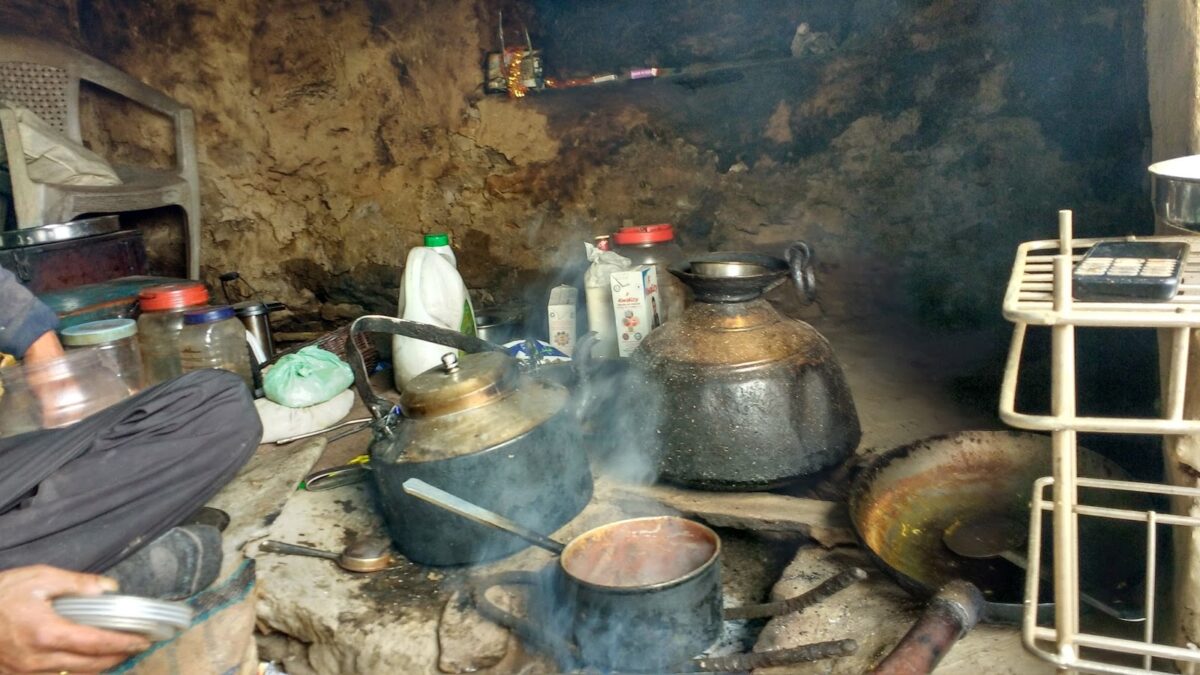 |
| Tea preparation |
The climb, the experience was amazing in itself and we all returned safely, so the lack of views was just a tiny blemish if any. After all, I need a reason to revisit the region
😉
Its a good idea to begin early so as to avoid the heat. Its better if each one finds their own pace. Walking zig zag can also make the climb seem less tiring. Be prepared for rain and wind and carry sufficient water. Frequent sips is more helpful to prevent cramps.
As they say, the mountains let you in , you do not climb the mountains! A trek every year is a fantastic way to stay healthy as we end up exercising regularly so as to be able to undertake this venture.
Have you trekked the Himalayas? Do share your travel stories!
🙂

Welcome!
We are with the 2018 April AtoZ Blogging challenge and its my fifth attempt. For those who missed it, here is the link to my Theme Reveal post. Do the alphabets still stand for the same things we learnt about in Nursery school?
Its day eleven and the alphabet is K.
K is for King. As in the guy who wears a crown and sits on a throne.
Can something else also be called a King? The Lion is said to be the King of the jungle. Recently I had posted a Ficus Bonsai that was displayed in full royal style.
Today I have yet another candidate for the post of King.
Its a 250 year old Ficus tree that is growing at the Acharya Jagdish Chandra Bose Indian Botanic Garden in Kolkata. The 1786-founded garden has a vast collection of lovely old trees. The main attraction is the Great Banyan (Ficus benghalensis) that is supported by thousands of roots and is spread over five acres. Despite its loss of the main trunk in 1925, the Banyan is still ‘growing’ . The authorities have had to increase the protective perimeter built around it as the tree ‘walked’ eastwards!
Here are some images of The Great Banyan.
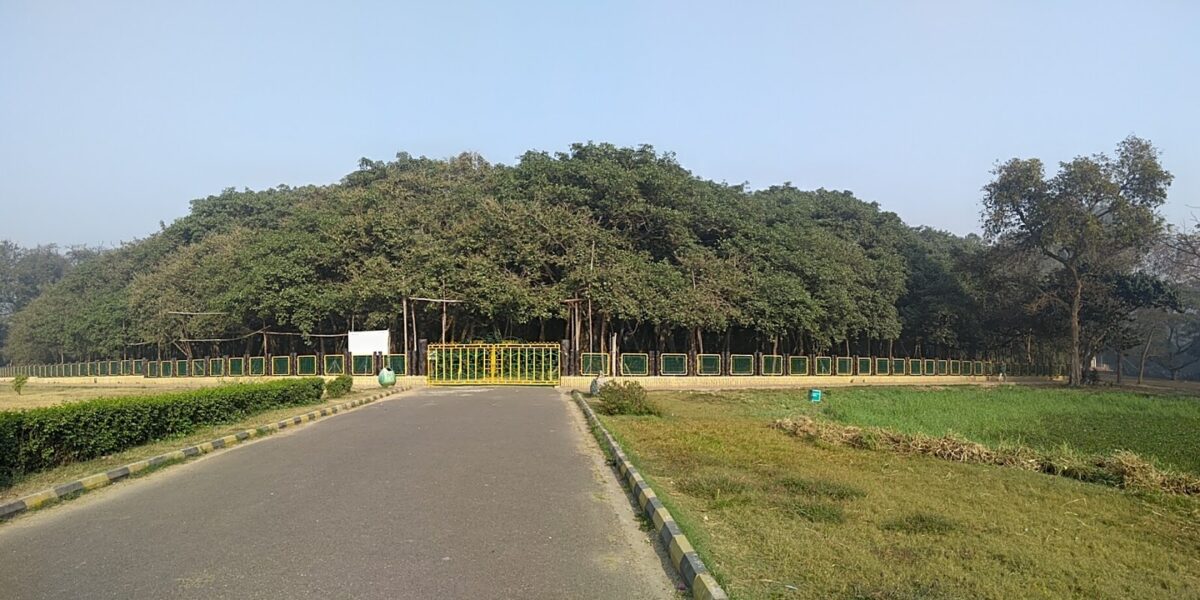
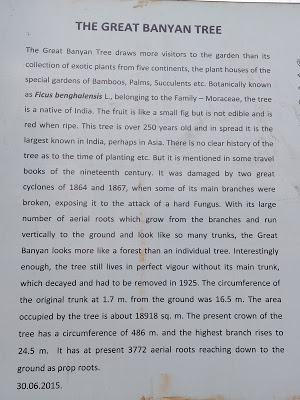
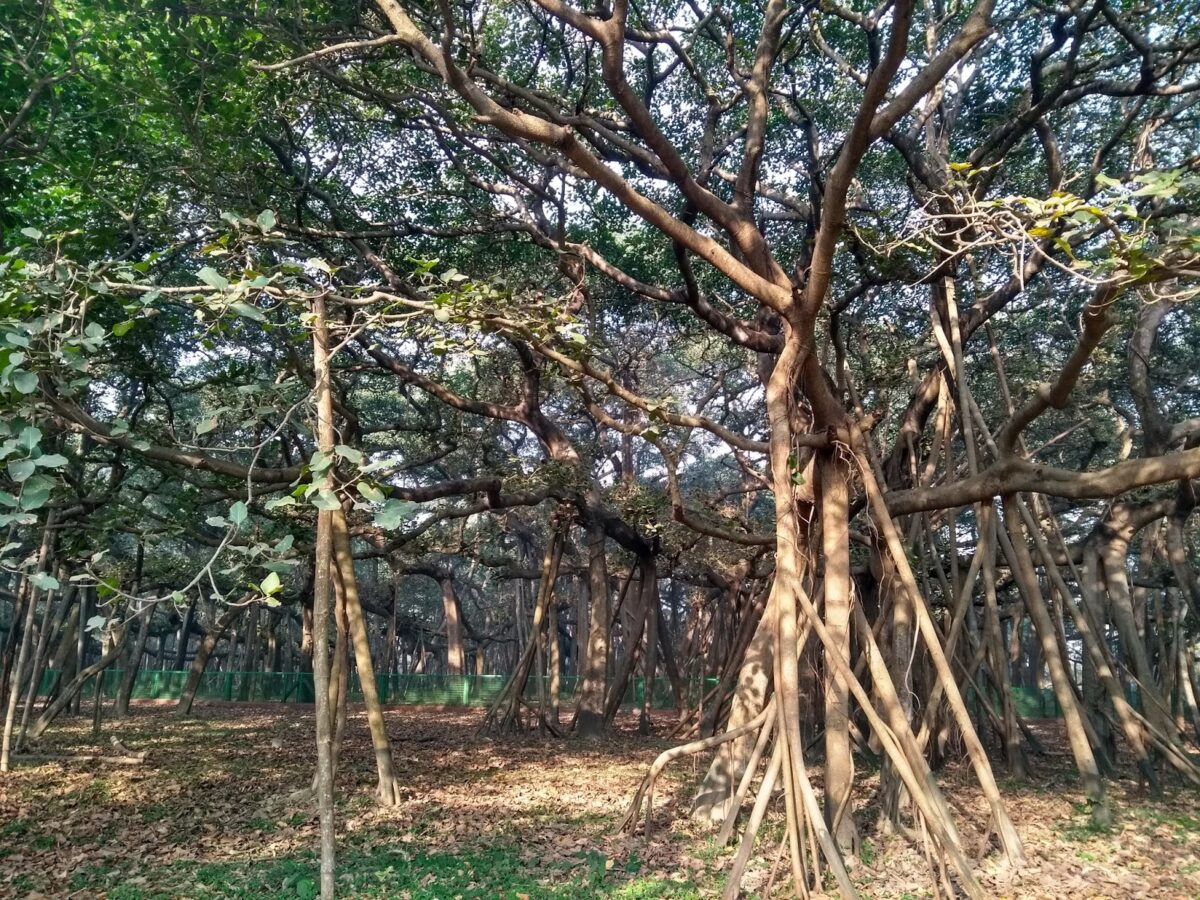 |
| It stands on thousands of supporting roots
This video will give take you straight to this great tree..
|
I am sure you will agree that this candidate is highly suitable for being called the King!
🙂
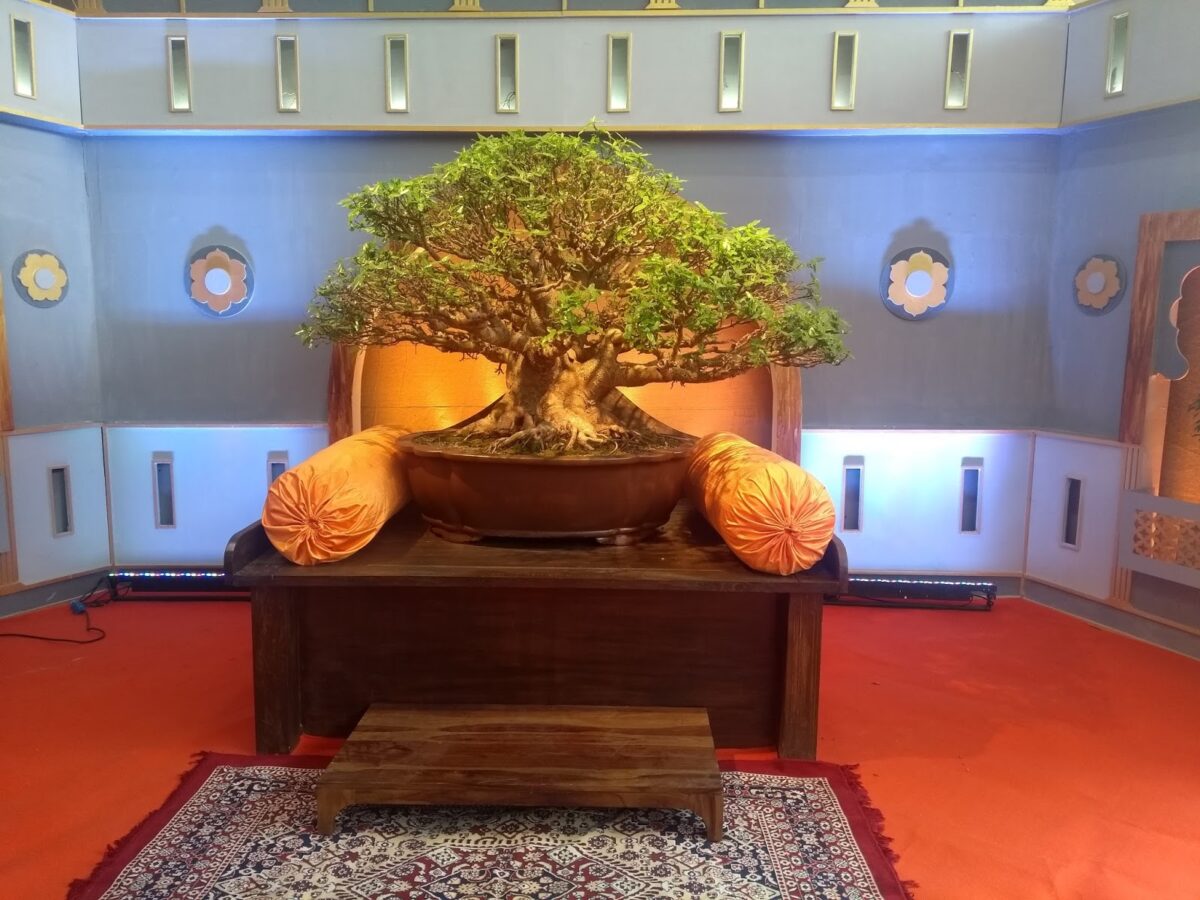
This is a very old and massive Ficus tree that I saw at the recent Bonsai Namaste exhibition in Pune (age was upto 150 years according to the organisers). In keeping with its status, the tree was accorded a royal status and displayed in this unique manner…
A King among the other wonderful Bonsai trees…
Here is a closer look….
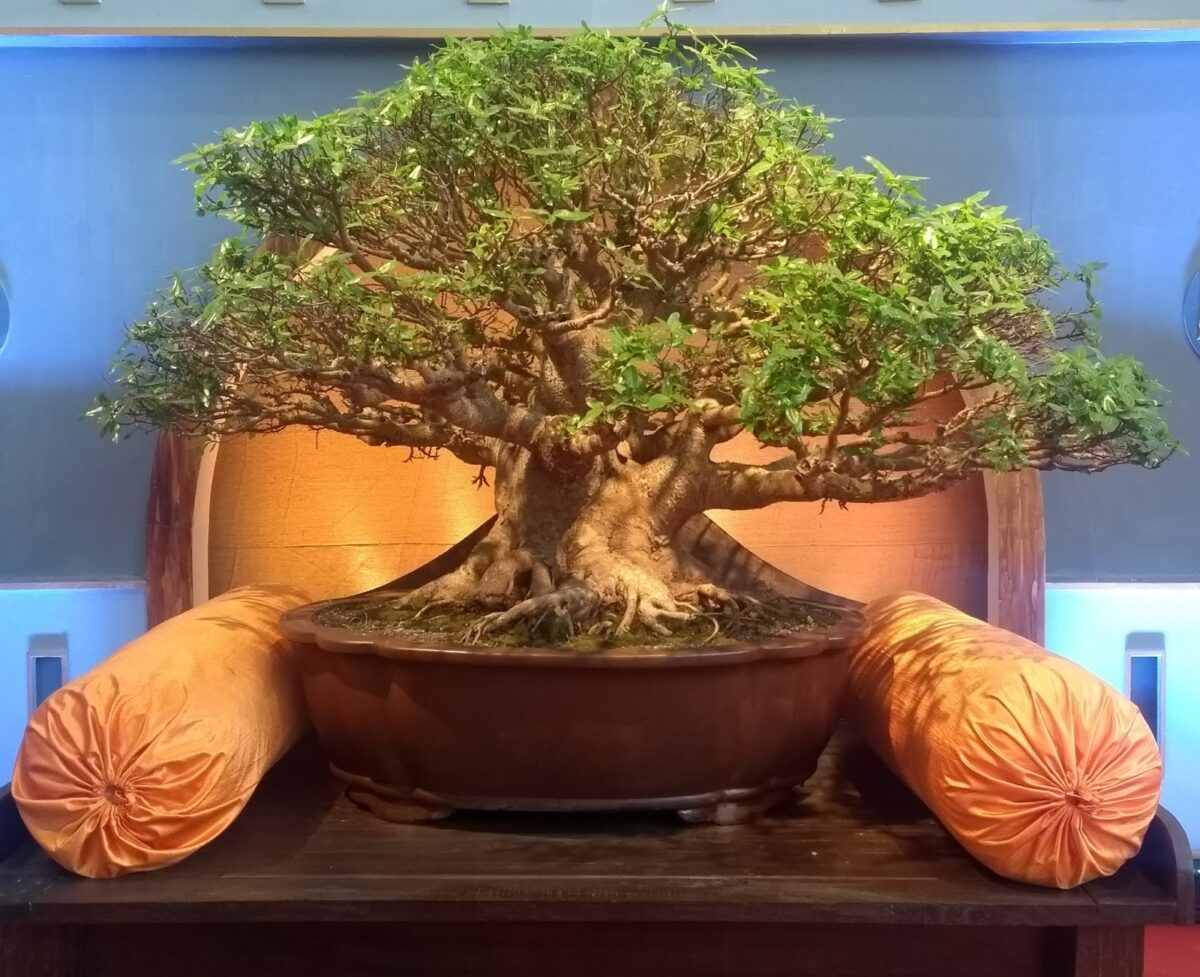
Amazing isn’t it?
I am participating in Parul’s #ThursdayTreeLove36. Do head over to see some amazing trees from around the world.
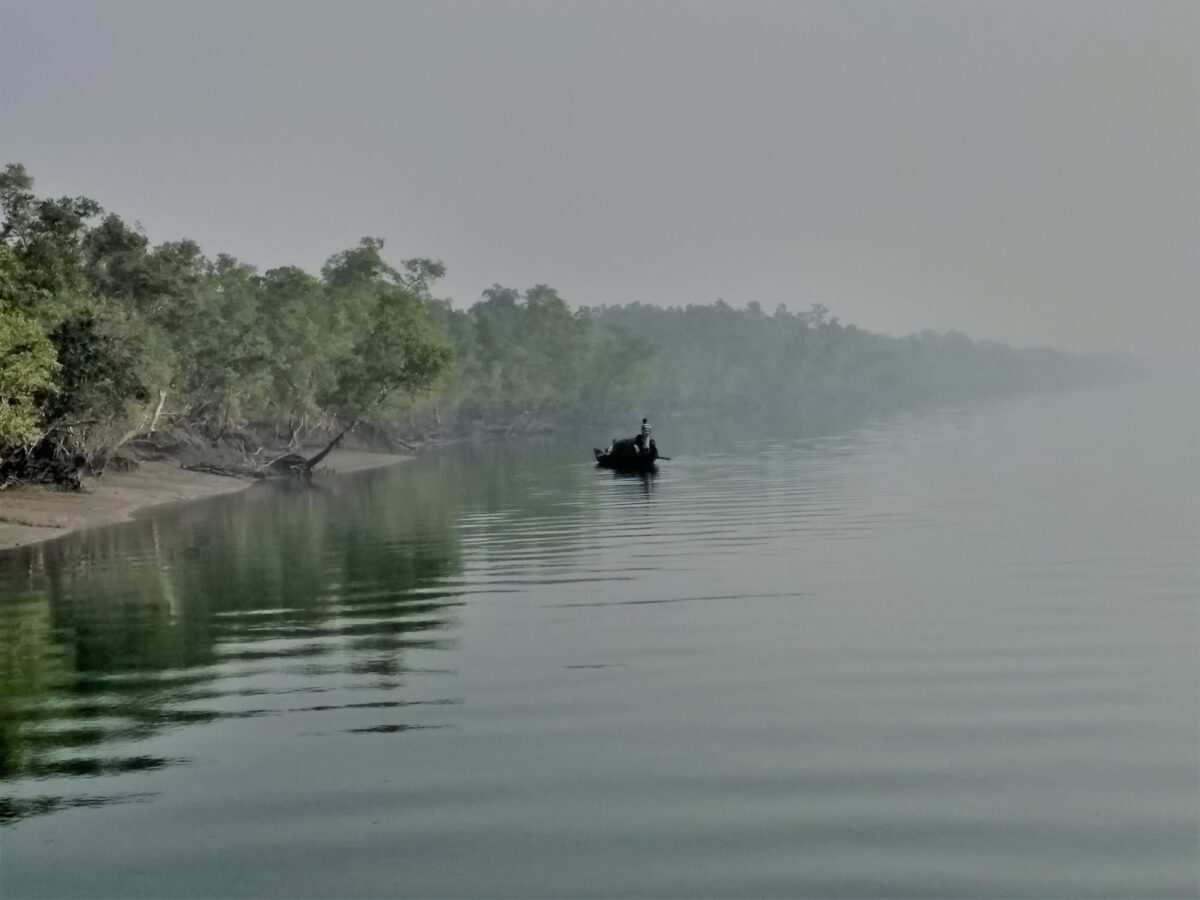
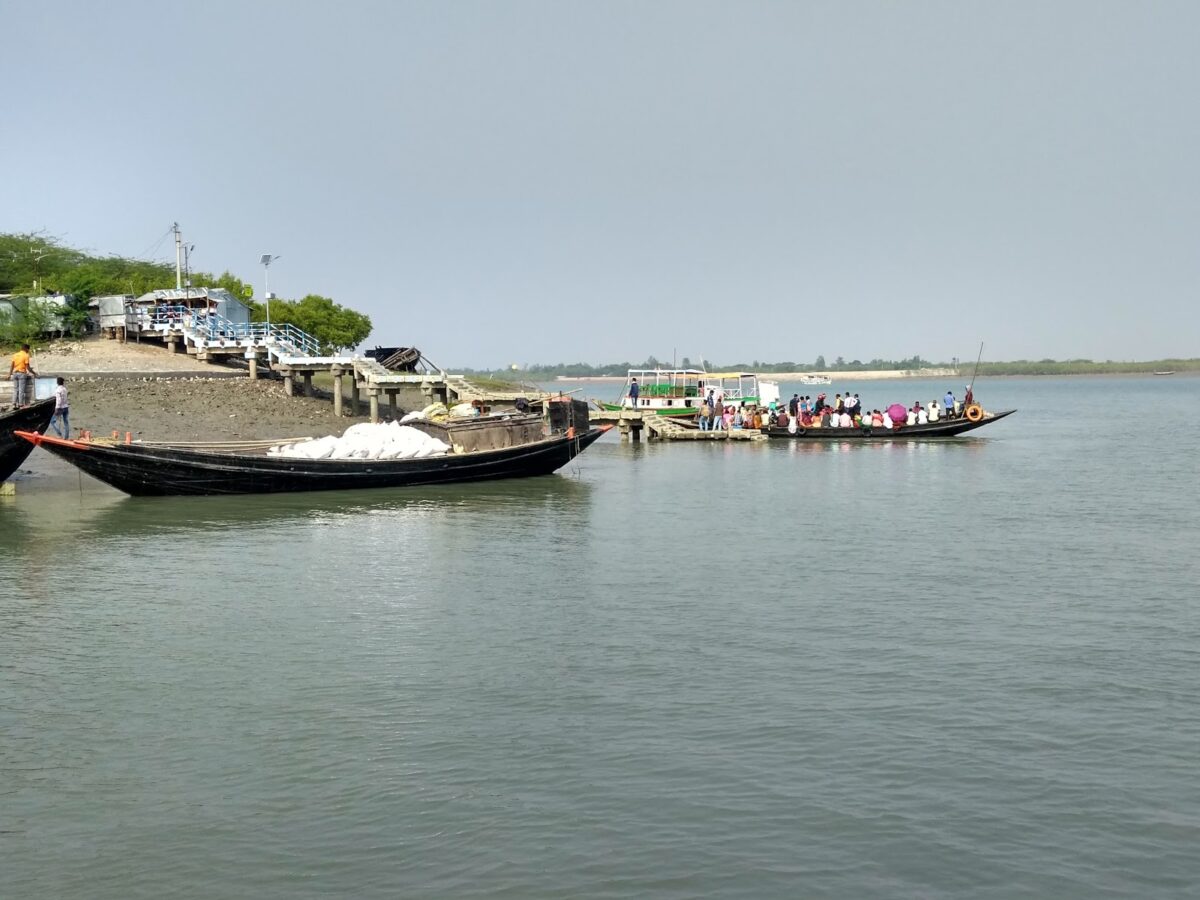
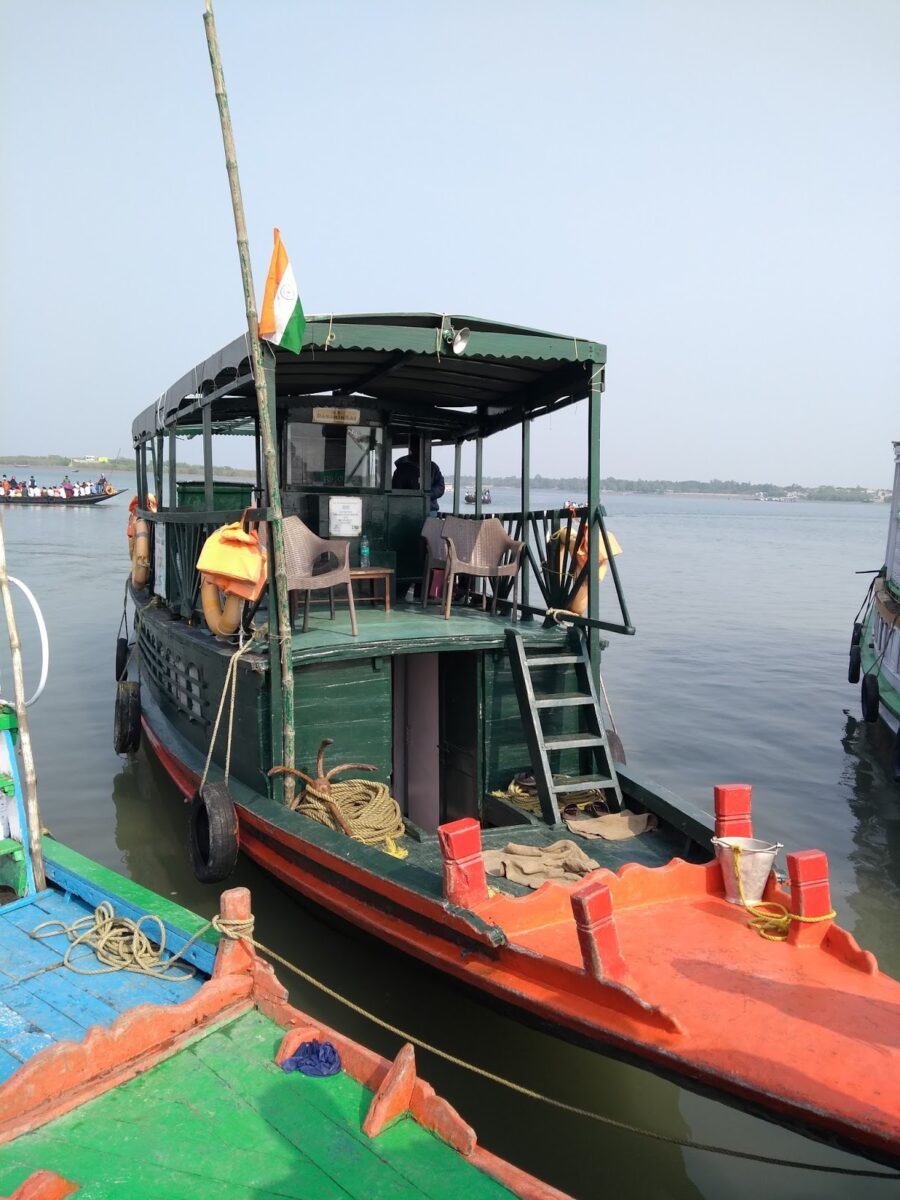
 |
| Breathing Roots |
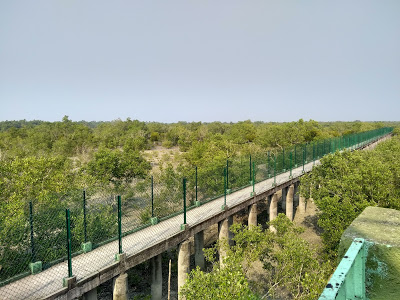 |
| Canopy walk at the Interpretation Centre |
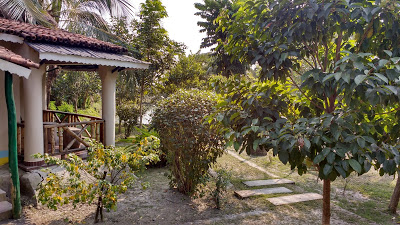 |
| Cottages at the resort |
We spent two entire days on the boat. Actually three if you add up two half days as well. Our day began early at 6 am as we boarded our mist-shrouded boat – the northerly winds were the cause said Mr Paul the resort manager. We spent the entire day on board, returning only at dusk. Our guides Nabho and Krishna joined us here. Both were very knowledgeable about fauna and flora. IMHO , info about the latter is often ignored by most naturalist guides but these two were a pleasant surprise. Seeing my interest in trees, they specifically pointed out special species, their distinguishing features etc using the correct scientific terminology.
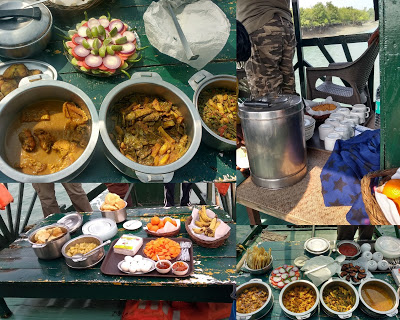 |
| A spread fit for a king! |
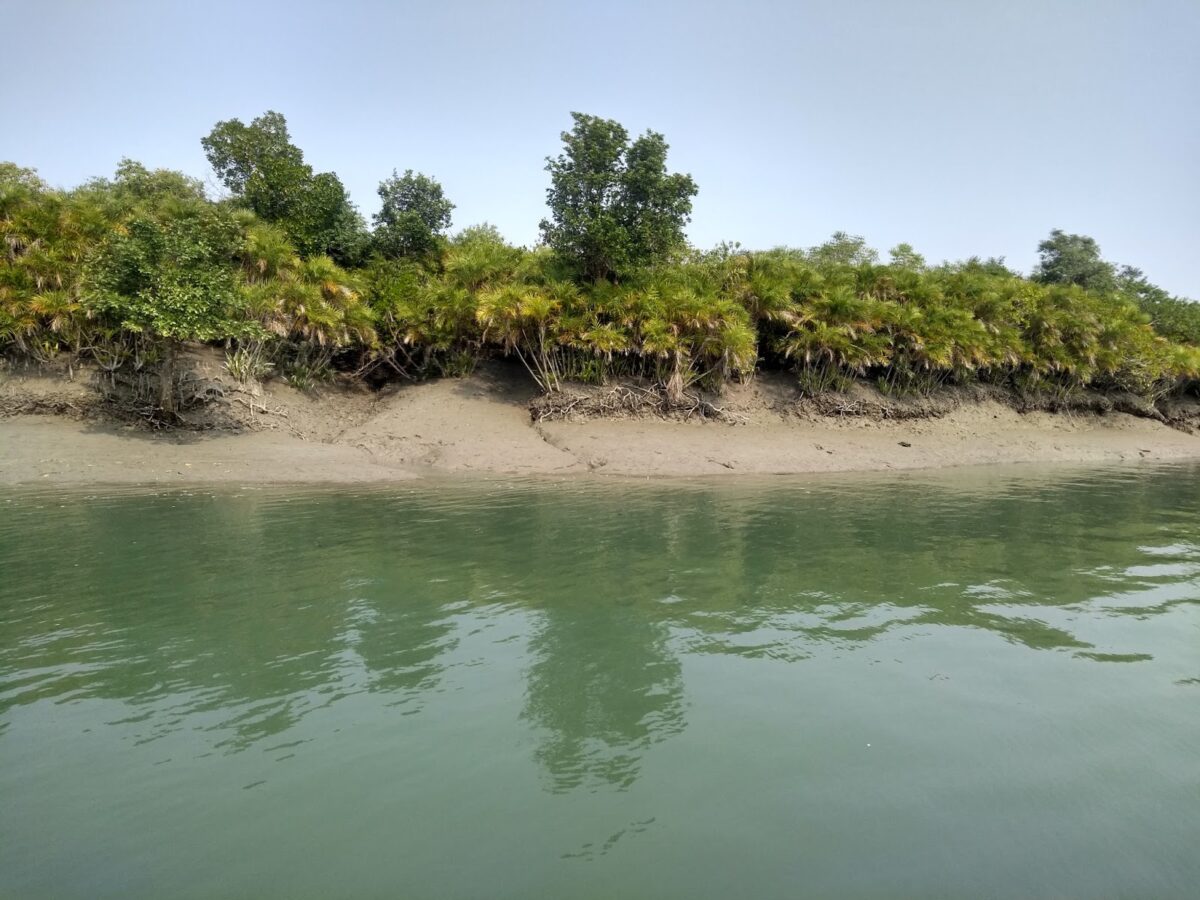 |
| Tiger Palms growing along the bank |
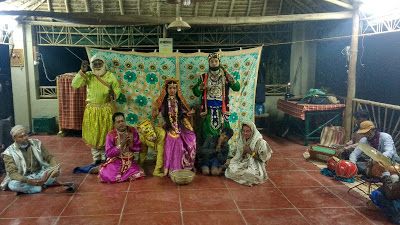 |
| A local troupe performed the legend of the Bonbibi |
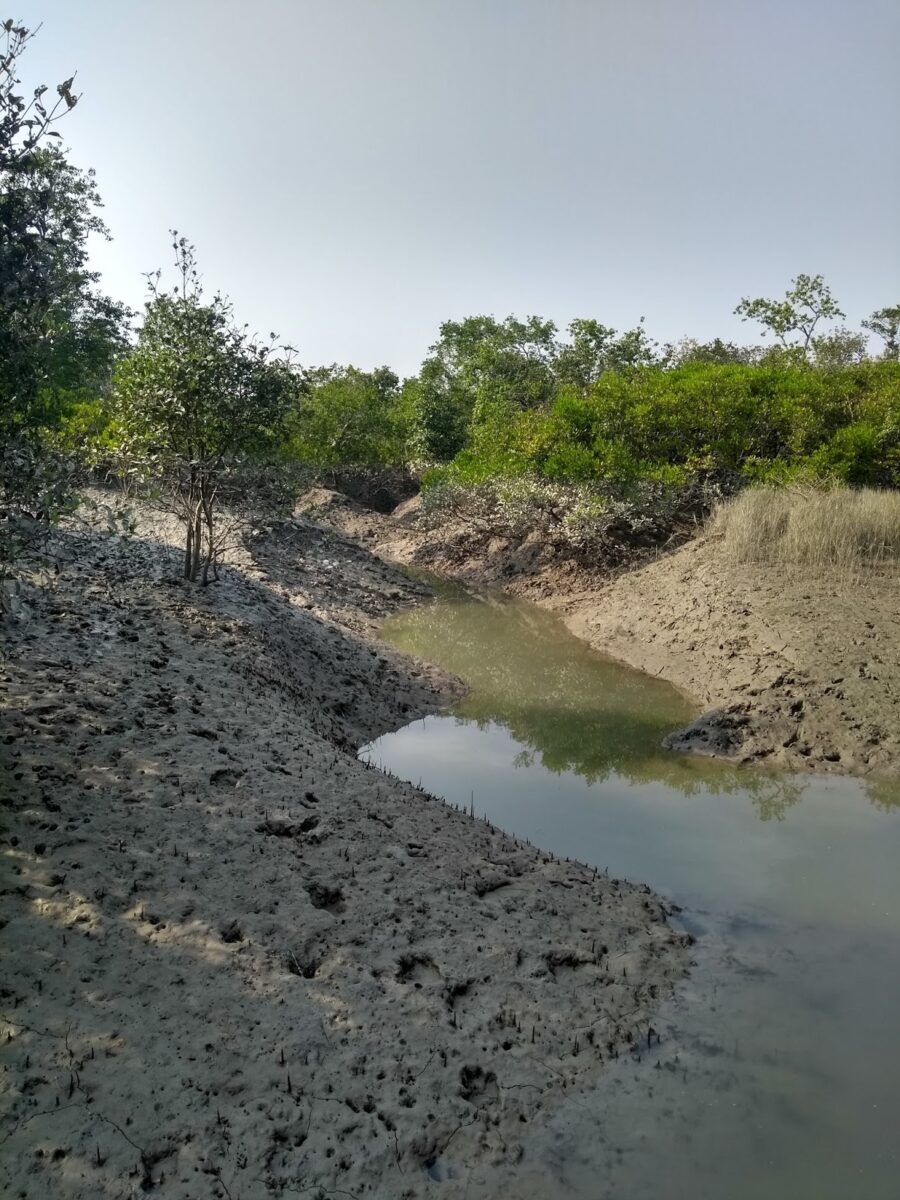 |
| Forbidden lanes… |
 |
| A mammoth Estuarine Crocodile Image Credit Rahul Rao , Director at Foliage Outdoors, Pune |

Peregrine Falcon? Croc? Dolphin? Pugmarks? Tiger? were the anxious queries as all binocs turned to one direction. Cameras clicked furiously till the object of attention decided he had enough of us! The Kingfishers including the Brown Winged were the most obliging and tourist friendly I must say!
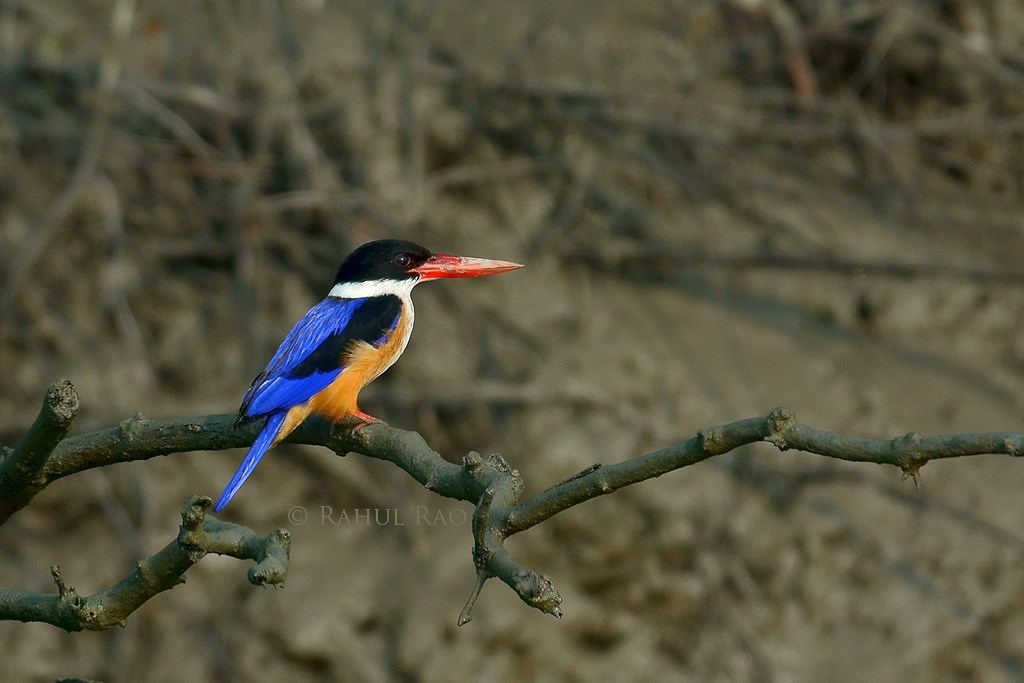 |
| Black Capped Kingfisher Image Credit Rahul Rao, Director at Foliage Outdoors, Pune |
And how can I forget the Lesser Whistling Ducks who gave us a glorious farewell.. I think there must have been thousands of them along with Northern Pintails and Northern Shovellers swimming in tandem as if escorting our boat out…
 |
| Lesser Whistling Ducks Image Credit Rahul Rao, Director at Foliage Outdoors, Pune |
This post is incomplete without a couple of lines from the book The Hungry Tide by Amitav Ghosh…
‘…This is a land half-submerged at high tide: it is only in falling that the water gives birth to the forest, To look upon this strange parturition, midwived by the moon is the know why the name “tide country” is not just right but necessary…..’